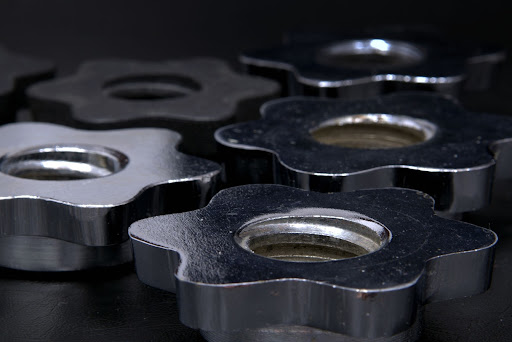Commercial Benefits and Applications of Silver Plating
As the most affordable and lightest weight of all precious metals, silver is far from second place when it comes to metal plating services. In fact, silver has the highest electrical and thermal conductivity of all major metal plating materials — yes, more than gold by a healthy margin.
The strength of silver and its properties as a noble metal make it well-suited to plating applications across industries from healthcare to aerospace.
What is Silver Plating?
Like other types of metal plating, the silver plating process involves the deposition of silver molecules in a thin layer over the surface of a substrate.
The metal part or product to be plated is first submerged in a liquid bath of silver ions. Then, the silver plating service provider passes an electrical current through the solution, causing those ions to be attracted to the surface of the metal part. They’re deposited onto the surface through electrolysis, coating it in a thin layer of silver (“electroplating” it).
In the end, the object will look like silver, when in reality it’s only wrapped in a very thin layer. This imbues the plated part with all of the external qualities of silver while retaining the structural and mass-related properties of the metal part within.
Benefits of Commercial & Industrial Silver Plating
The unique properties of silver open up a whole range of benefits as a plating material:
- Corrosion resistance: This noble metal resists corrosion and extends the service life of plated parts.
- Thermal conductivity: Silver makes a strong choice for heat dissipation in vacuum environments as the most thermally conductive of all plating material options.
- Electrical conductivity: Electronics make great use of silver’s highest overall electrical conductivity among plating materials.
- Reflectivity: Polished silver has the highest optical light reflectivity of any metal, which is why it’s used to create mirrors (or reflectors for laser production!).
- Antibacterial properties: The antibacterial and antimicrobial properties of silver (as a noble metal) makes silver ideal for food service or medical instruments and devices.
- Lightweight: Silver has the lowest weight of all precious metals, which minimizes its impact on the plated object’s total weight.
- Biocompatibility: Silver plating ensures that ions do not cause allergic or otherwise adverse reactions when coming into contact with the human body.
- Lubricity: Silver makes a great anti-seizing or anti-galling surface coating.
- Ductility: Silver alloys well with other metals and is highly ductile when it must be worked.
- Solderability: The high solderability of silver makes it great for small parts like kitchen utensils.
- Affordability: Silver is a much less expensive precious metal than gold or palladium, reducing costs while providing the performance of a noble metal.
Silver Applications — A Versatile Plating Material
While silver plating emerged around the 1700s as a more cost-effective way of crafting silver household objects like tableware or candlesticks, today it has much broader applications. Makers of musical instruments, computer chips, housewares, surgical tools, and more all rely on silver plating for high-performance products.
Here’s a quick sampling of some of the diverse uses of silver plating.
- Medical devices: Silver is biocompatible, antibacterial, antimicrobial, and does not rust or easily corrode. Combined with excellent thermal and electrical conductivity, this makes it great for medical devices like catheters, pumps, medical lasers, forceps, etc.
- Aerospace and defense parts: Because silver holds up well in a low-oxygen environment, it’s ideal for aerospace and military applications as well as electrical or mechanical components of aircraft.
- Automotive: Silver has a much higher melting point than cheap alternatives like tin (3.5 times higher, in fact!). It has great lubricity, as well, making it an exceptional choice for automotive parts.
- Power generation: The renewable energy and power sectors use the conductivity of silver plating for solar panels, batteries, and other next-generation energy production products.
- Electronics & telecom: Silver is a prime plating material for semiconductors and connectors due to its excellent electrical conductivity.
- Luxury products: The beautiful, reflective, bright-white color of silver plating makes it an attractive finish for luxury and decorative items — and a functional one, too, in mirrors!
- Alternative to other precious metals: Gold, platinum, palladium…all of these other precious metals cost a lot more than silver, making silver the perfect alternative for saving money while leveraging noble metal properties. It also makes silver a great choice for re-plating parts that used to use tin or tin alloys (the “poor man’s silver”).
Need Silver Plating Services? Contact MFT.
As one of the largest, oldest, and most diversified metal finishers in New England, MFT is ready to make your metals perform better. MFT has serviced metal plating and component coating and removal clients throughout the Northeast and across the US since 1947. With the recent addition of silver plating services to our capabilities, we’re fully equipped to provide the quality our customers trust for all silver plating applications. Request a quote today!

